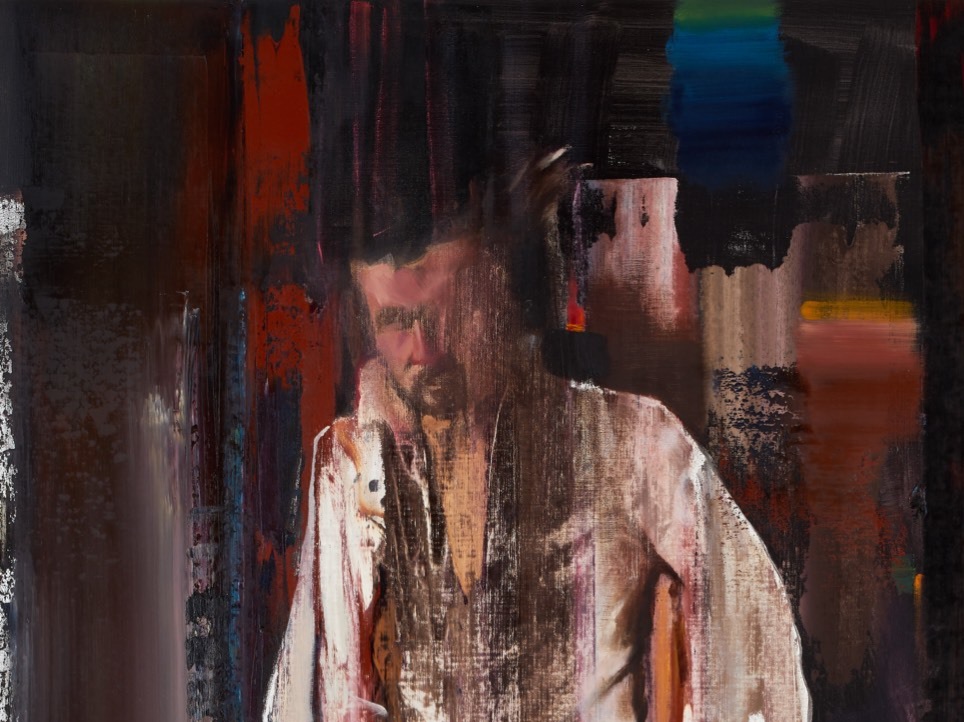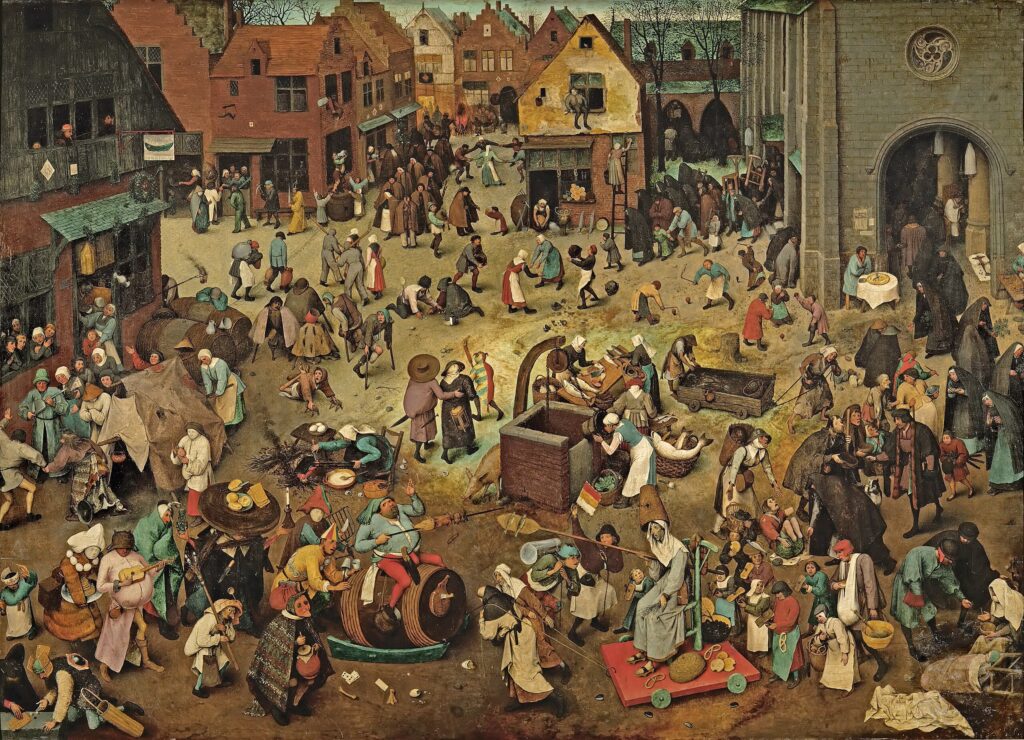Nestled in the heart of Palermo, Museo Riso stands as a beacon of artistic expression that transcends mere visual aesthetics. It is a place where the silence speaks volumes, echoing the city’s tumultuous history through its captivating exhibits. My recent visit to this esteemed museum was a journey into the depths of contemplation, led by art that resonates with the soul.
Palermo, with its rich yet traumatized past, has birthed creations that possess the power to command silence, to invite introspection. The pieces displayed within the walls of Museo Riso are not just art; they are stories, emotions, and silent screams from a bygone era that deeply moved me. This museum showcases how, even in the aftermath of adversity, beauty and silence can emerge, compelling us to listen with our eyes and feel with our hearts.

Aldo Palazzolo
Aldo Palazzolo’s “Moriendo Desolatum” (1983-1988) stands as a poignant testament to the artist’s profound exploration of human desolation and existential despair. Created over five years, this piece encapsulates a period of intense reflection and artistic evolution for Palazzolo, deeply rooted in the cultural and historical upheavals of the time. The artwork, with its hauntingly beautiful interplay of shadow and light, weaves a narrative of isolation and the universal quest for meaning amidst the chaos of existence. Palazzolo’s masterful use of texture and form invites the viewer into a space of contemplation, where the boundaries between the self and the abyss of despair become blurred. “Moriendo Desolatum” is not merely a visual experience; it is an emotional journey that challenges the viewer to confront the depths of their own vulnerability and resilience.

Regina José Galindo
Regina José Galindo, a Guatemalan performance artist known for her powerful and often provocative works, continues to captivate and challenge audiences worldwide. Her piece “Raices” exemplifies Galindo’s commitment to pushing her body to its physical and symbolic limits to address complex themes of identity, violence, and societal constraints. Having been familiar with Galindo’s work throughout film school, where her daring performances served as a profound source of inspiration, revisiting her work was a deeply gratifying experience. It was immensely reassuring to see that years later, Galindo remains unwavering in her pursuit of art that confronts and transcends the boundaries of the physical self. Her enduring dedication to exploring the resilience and vulnerability of the human body not only highlights her evolution as an artist but also rekindles a sense of admiration and inspiration for those who have followed her journey.

Fulvio Di Piazza
Fulvio Di Piazza, an artist celebrated for his surreal and transformative approach to portraiture, crafts worlds where imagination and reality blur into captivating vistas. His work “Lawn” (2005) is a striking example of this, where the use of vibrant green hues and a breathtaking technique not only captures the eye but leaves a lasting imprint on the soul. The piece’s lush, almost ethereal quality, combined with Di Piazza’s unique ability to infuse his creations with a sense of life and motion, invites viewers into a mesmerizing landscape of color and emotion. For me, encountering “Lawn” was more than just an aesthetic experience; it was a deeply emotional journey. The vivid greens and the intricate details wove a spell that lingered long after my initial viewing, a testament to Di Piazza’s skill in marrying color and form to evoke profound feelings and memories.

Loredana Longo
Loredana Longo’s “Souvenir #3 Family Portrait” (2009) encapsulates the profound, often hidden stories of struggle and resilience that permeate Palermo’s history, marked by the shadow of the mafia. After spending a day immersed in the city’s poignant narratives — from graveyards echoing with the silent cries of countless victims to tales of priests whose lives were cut short in their quest to heal and protect families torn apart by violence — encountering Longo’s work at the Museo Riso struck a deep emotional chord. The artwork, with its raw depiction of a family caught in the crosshairs of mafia influence, serves as a powerful reminder of the personal and collective pain endured by the city’s inhabitants. It not only highlights the fragility of life and the strength of familial bonds in the face of adversity but also offers a space for reflection on the impact of such violence on the fabric of society. For me, “Souvenir #3 Family Portrait” was not just an artwork; it was a poignant, visceral connection to the heartache and resilience of Palermo, leaving a lasting imprint on my soul.



Antonio Sanfilippo
Antonio Sanfilippo, a key figure in the post-war Italian abstract movement, has always had a knack for captivating the viewer’s imagination through his dynamic compositions. His work “Senza Titolo” (1958) is no exception, presenting a visual experience that transcends the conventional boundaries of abstract art. What caught my eye about this particular piece was its remarkable ability to create a trompe d’œil—an immediate impression that shifts and deepens with the viewer’s movement. As I moved left and right before the painting, it seemed to come alive, morphing and creating illusions that played with perception and reality. This interactivity, where the artwork changes with the viewer’s position, demonstrates Sanfilippo’s mastery in manipulating form and color to engage the observer in a dance of light and shadow. The dynamic nature of “Senza Titolo” not only showcases Sanfilippo’s innovative approach to abstract painting but also offers a unique, immersive experience that challenges the viewer to explore the depths of their visual and emotional perception.

Jannis Kounellis
Jannis Kounellis, a pivotal figure in the Arte Povera movement, is renowned for his installations that transform ordinary objects into profound statements on existence, memory, and loss. His 1993 installation “Senza Titolo” is a striking example of this, where wardrobes are suspended from the ceiling, creating a surreal and haunting landscape within the gallery space. Walking beneath these dangling artifacts of domestic life, I was enveloped in an atmosphere thick with nostalgia and introspection. The only sound was the creaking of the wood under my feet, a somber accompaniment that heightened the sense of displacement and temporality evoked by the installation. Kounellis’s use of wardrobes, objects so intimately tied to personal histories and private moments, hanging void and inaccessible, spoke volumes about the fragility of the human experience. This installation didn’t just capture my attention; it invited me into a meditative journey, making me ponder the layers of meaning behind the suspended wardrobes. The experience was both unsettling and deeply moving, showcasing Kounellis’s genius in using simple elements to evoke complex emotional landscapes.





Donatella Lombardo
Donatella Lombardo’s “Sismografie Narrative” (2017) stands out as a compelling fusion of visual art and storytelling, where the artist embarks on an exploration of narrative through the lens of seismic waves. Lombardo delves into the metaphorical potential of seismographs, traditionally tools for measuring the Earth’s tremors, reimagining them as instruments to capture the vibrations of human emotions and experiences. This work, comprising intricate lines that seem to oscillate between chaos and order, invites viewers to contemplate the unseen forces that shape our lives and histories. The abstract, yet profoundly narrative quality of “Sismografie Narrative” prompts a reflection on how personal and collective stories are recorded, interpreted, and remembered. Lombardo’s innovative approach to depicting narrative landscapes through the visual vocabulary of seismography not only challenges conventional forms of storytelling but also offers a unique perspective on the interconnectedness of human emotions and the natural world. This artwork serves as a poignant reminder of the tremors, both literal and metaphorical, that continuously shape our existence.

Luciana Picchiello
Luciana Picchiello’s “L’uomo è solo” (2017) is a profound exploration of solitude and the human condition, encapsulating the essence of isolation in the modern world. Through this work, Picchiello employs a minimalist yet evocative approach, crafting an image that resonates deeply with the viewer’s own experiences of loneliness and introspection. The title, translating to “Man is Alone,” sets the tone for a contemplative journey into the nature of solitude, not just as a physical state but as a profound existential reality. Picchiello’s skillful manipulation of space and subtle imagery invites the audience to reflect on their personal moments of solitude, drawing attention to the silent, often overlooked moments of our lives where we face ourselves most intimately. “L’uomo è solo” is not merely an artistic expression but a mirror held up to the soul, urging us to confront the complexities of our inner landscapes and the universal search for connection amidst the inherent solitude of the human experience. Through this work, Picchiello masterfully navigates the delicate balance between the collective and the individual, offering a poignant commentary on the solitude that binds us all.

Conclusion
My visit to Museo Riso in Palermo was an unforgettable journey through a spectrum of emotions, deeply engrained in the city’s past and present. Each artwork, from Aldo Palazzolo’s haunting “Moriendo Desolatum” to Luciana Picchiello’s introspective “L’uomo è solo,” served not only as a testament to the artist’s individual vision but also as a reflection of the collective human experience. The museum, with its eclectic mix of contemporary pieces, offers a unique lens through which to view the resilience, beauty, and complexity of the human spirit, especially within the context of Palermo’s complex history. The works of Regina José Galindo, Fulvio Di Piazza, and others touched my soul, reminding me of art’s power to evoke empathy, provoke thought, and inspire change. As I left Museo Riso, I carried with me a deeper understanding of Palermo’s cultural landscape and a renewed appreciation for the artists who continue to explore and express the multifaceted dimensions of human life. This visit was not just an exploration of art; it was a profound encounter with the stories and souls that shape our world.





